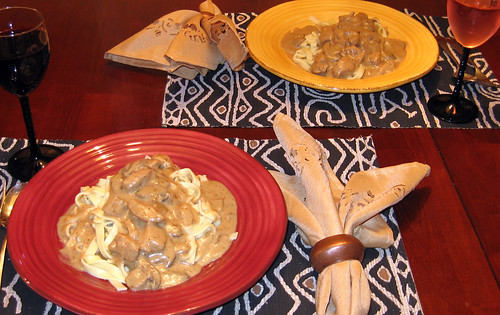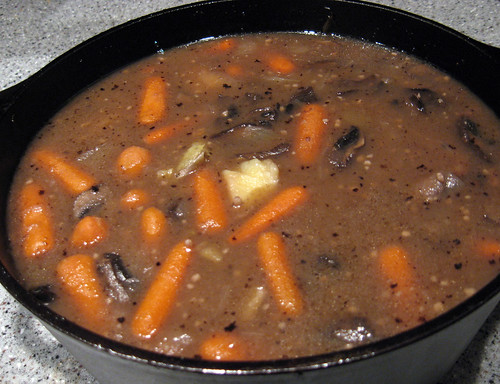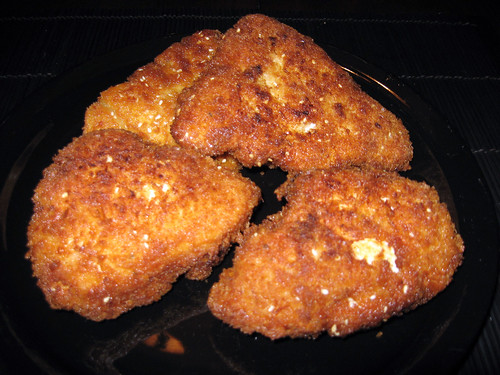Fine Bread in The English Housewife by Gervase Markham (1615)
Take a quarter of a pound of fine sugar well beaten, and as much flour finely bolted, with a quantity of aniseeds a little bruised, and mingle all together; then take two eggs and beat them very well whites and all; then put in the mingled stuff aforesaid, and beat all together a good while, then put into a mould, wiping the bottom ever first with butter to make it come out easily, and in the baking turn it once or twice as you shall have occasion, and so serve it whole, or in slices at your pleasure.Unfortunately, this recipe is missing a little important information, such as temperature, baking time, and quantity of aniseeds. So I researched and experimented until I got a recipe I liked.

Fine Bread
1/2 pound of unbleached white flour
1/2 pound of white sugar
4 eggs, well-beaten
1/2 tsp to 1 tsp of aniseeds, bruised (or gently crushed -- enough to crack, but not pulverize)
1 tsp melted butter
Sift together the flour and sugar. Add the aniseeds and mix. Add beaten eggs and stir until the ingredients turn into batter. Note: At one point, the ingredients will seem like there isn't enough moisture in the egg to moisten all the flour and sugar. Stir for another minute and it will combine into batter.
Put melted butter in the bottom of the baking dish, making sure the bottom is coated. Add the batter.
Bake at 400°F (260°C) until a toothpick inserted into the center comes out clean. The baking time is influenced by the material of the baking pan; metal pans bake quickest and clay pans take a bit longer.
The fine bread is not quite as sweet as the recipe would make it seem. The aniseed provides a nice flavor without being too overwhelming (though the amount could be increased for a more intense flavor). The seeds soften during the baking so there isn't an unpleasant hardness or crunchiness when they are encountered.
The fine bread tends to harden into a biscotti-like texture as it ages. I'm not a huge fan of the change, but others have found it quite lovely.
I've substituted ground cinnamon for the anise with wonderful results.



